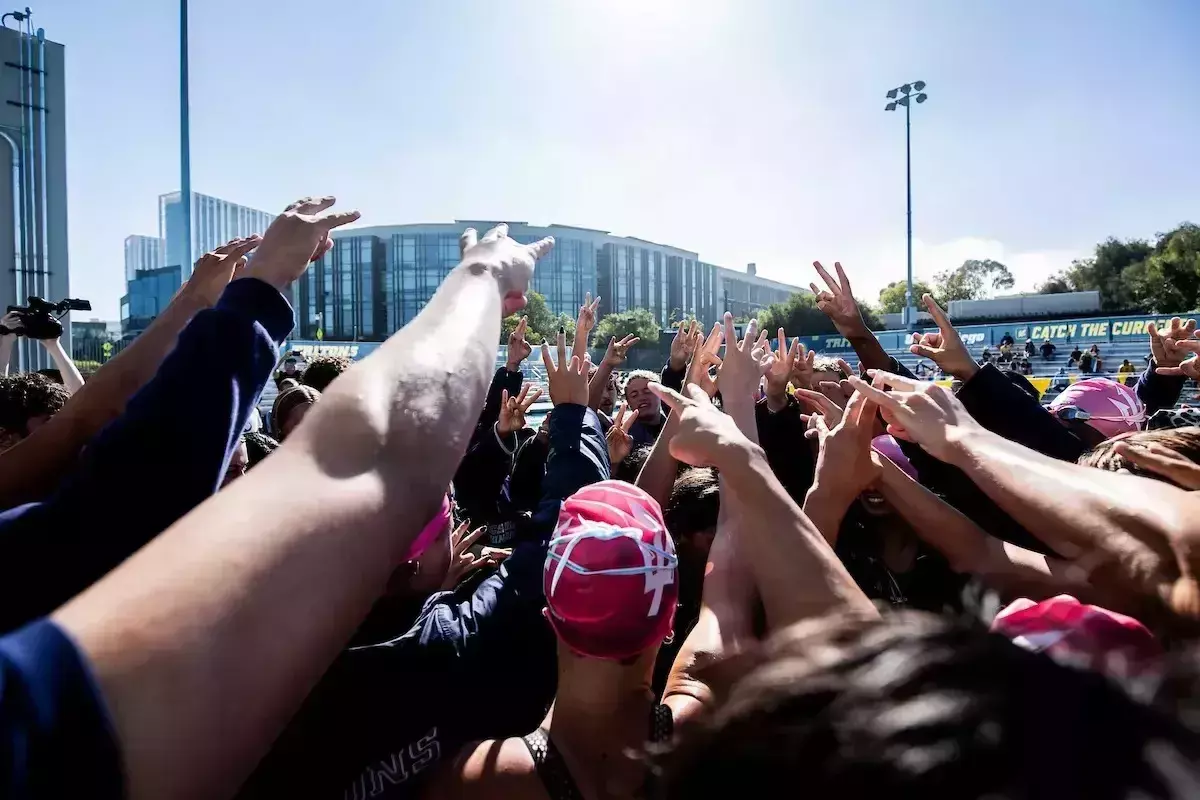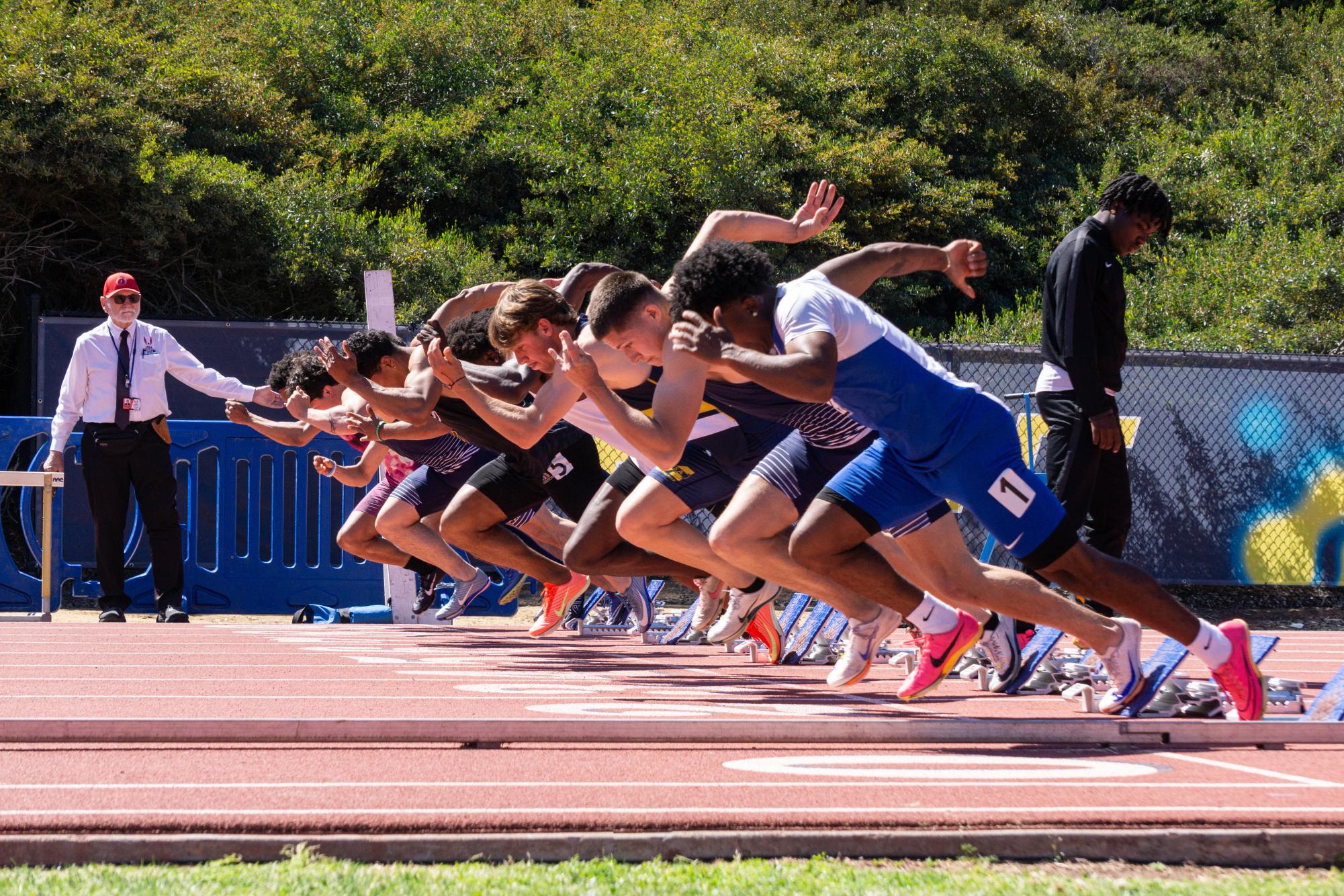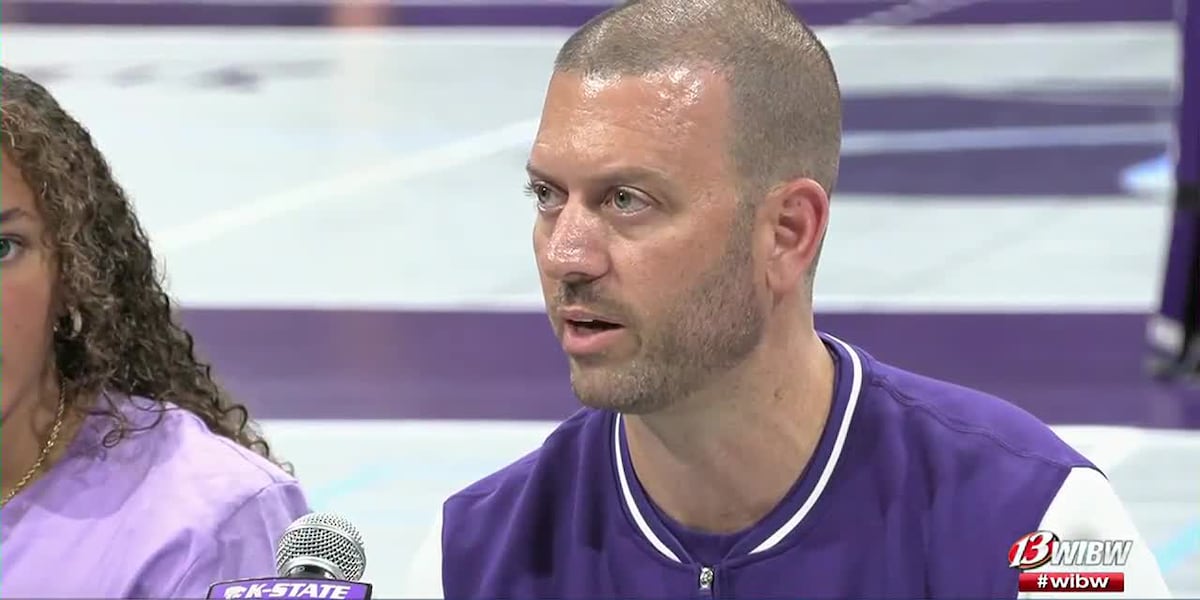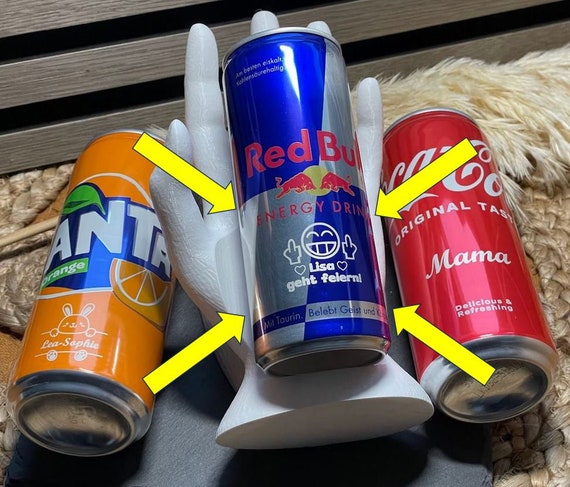Sports
UCSD track and field shatters records at Triton Invitational
UC San Diego track and field blazed past its Big West competitors at the Triton Invitational on Friday, April 4, and Saturday, April 5, breaking school records in front of the home crowd. Held at Triton Track and Field Stadium, the 32nd annual invitational was UCSD’s lone home meet of the season and an opportunity […]



UC San Diego track and field blazed past its Big West competitors at the Triton Invitational on Friday, April 4, and Saturday, April 5, breaking school records in front of the home crowd. Held at Triton Track and Field Stadium, the 32nd annual invitational was UCSD’s lone home meet of the season and an opportunity to celebrate the nine graduating Triton athletes.
Two school records fell on Friday afternoon alone. With one month left before UCSD’s first Division-I conference championship, the Tritons looked to chase down personal records and Big West qualifier marks.
Sophomore sprinter Anthony Flowers took home UCSD’s first win of the meet with a time of 20.88 seconds in the 200-meter on Friday afternoon, breaking his own record from last month. His personal-best time is the second-fastest 200 in the Big West this season.
“I definitely expected breaking [the record] again,” Flowers said in a post-race interview with The UCSD Guardian. “I was really looking for a PR, which I ended up getting. I hadn’t PR’d since high school and then I finally got to break that with the 20.88 yesterday. I usually have a 4×100 and 100 before that, so I wanted to take advantage of having fresh legs under me.”
Junior distance runner Sylvana Northrop followed suit, smashing her own 5,000-meter school record by 10 seconds and winning the event in a blistering 16:24.50. Northrop set the previous school record one month ago at the second outdoor track meet of the season. Her mark was just 0.19 seconds behind the facility record that was set in 2023.
Friday’s standout performances also included the women’s triple jump and the men’s 10,000-meter race. Freshman Makena Bailey led the Tritons in the women’s triple jump, tying for second with a mark of 11.71 meters. UCSD dominated the event, putting up the next five highest marks out of the field of 23.
Distance seniors Jordan Haney and Miles Takiguchi went 1-2 in the last track event on Friday evening — the men’s 10,000 — capping off an explosive first day at the Triton Track.
Haney, who has a 29:59 personal record in the event, won with a time of 30:42. He led from the first lap, running an aggressive solo race in an unsuccessful chase for a personal best. Takiguchi followed just over 20 seconds behind to cement UCSD’s double podium finish.
“Time wise, it wasn’t exactly what I wanted, but this race is also kind of special to me because before I was on the team, I did a lot of 10K time trials on the track here as a freshman,” Haney said. “I walked on as a sophomore, and to have my last regular season 10K on the track at night, doing [it] alone, and having the whole team there cheering was pretty awesome.”
The Tritons kept up the momentum early Saturday morning with a win in the men’s 4×100-meter relay. Flowers — in his second victory of the weekend — joined freshman Brycen Tablit, junior Kian Maher, and sophomore Brandon Orlow to take first place for UCSD.
Their 41.07 time gave them the win, though it fell slightly behind the school record of 40.57 that they set last month. Flowers, who hoped to improve on another one of his records this weekend, stumbled and got off to an unfavorable start.
“That didn’t go as planned,” Flowers said. “We had some issues with the officials, for sure. I was not even anywhere near my zone, and they set off the race, so I had to run back 50 meters, back to my lane and get ready to get the baton. I barely got the baton, so that definitely impacted our race a lot.”
The Tritons also put up a strong showing in both the men’s and women’s 1,500-meter. Northrop held off an Irvine athlete to take first place with a time of 4:25.69. Distance sophomore Camille Lindsay and senior Kelsie Yamano followed close behind to take third and fourth. Distance senior Nathan Garderes picked up another podium finish for the Tritons, clocking a 3:51.26 time to take third in the men’s 1,500.
UCSD had less success in the hurdles — graduate student Amari Jenkins, No. 4 on UCSD’s all-time 100-meter hurdles list, took a painful fall on two hurdles before the line and could not finish the race. She would come back from the DNF to place fifth in the 400-meter hurdles later that afternoon with a time just 0.86 seconds shy of her personal best.
Junior Allyson Abandonato took third in the women’s 800-meter with a personal best time of 2:09.09 that puts her at second on the Triton all-time list. On the men’s side, sophomore Shane Badcock and senior Kai Dettman battled a tight field in the fastest heat of the men’s 800. Badcock was in the lead with 200 meters remaining, but an Irvine athlete found the last gear to overtake him and win. Badcock placed third with a time of 1:51.08, and Dettman was close behind in fourth at 1:51.42.
To round off his trio of sprint events this weekend, Flowers competed in the 400-meter and placed 15th overall with a time of 48.84. For Flowers, who specializes in the 100 and 200, the 400 was a chance to train outside of his usual distance. Ahead of him, an Azusa Pacific University athlete ran 45.80 to break the 45.83 stadium record from 1997.
Off the track, Tritons dominated the shot put events. Junior Feyi Olukanni launched a personal best shot put throw of 15.30 meters to take fifth place and move up to No. 2 on the UCSD all-time women’s shot put list. Olukanni’s performance puts her at second in the Big West this season. On the men’s side, freshman Tyler Lange’s mark of 15.40 meters was a personal best that put him in third for shot put at the Triton Invitational.
With the outdoor season winding down, the Tritons have two more chances to improve their marks and chase personal records — the upcoming Mt. Sac Relays in Los Angeles from April 17 to 19 and the Steve Scott Invite in Irvine on May 2 and 3.
UCSD track and field athletes who met the Big West qualifying standards are looking forward to competing in their first-ever postseason championship.
“Honestly, I think this is the best group we’ve had at this school, definitely since we’ve been D-I but even, of course, when we were D-II,” Flowers said. “I’m confident in our guys and what we can produce on the track. We definitely have a chance to place at least top three in the Big West. I have no fear or [doubt] of that.”
The Big West track and field championships will take place in Long Beach from May 9 to 17.
Sports
PT Assistant Track & Field Coach in Cupertino, CA for De Anza College
Located in the heart of the Silicon Valley. • De Anza College has a comprehensive, highly regarded athletics program, known for its success in both academics and sports. The college fields 17 sports programs, with 9 for women and 8 for men, and has a large number of Student-Athletes who consistently achieve high academic […]

Located in the heart of the Silicon Valley.
• De Anza College has a comprehensive, highly regarded athletics program, known for its success in both academics and sports. The college fields 17 sports programs, with 9 for women and 8 for men, and has a large number of Student-Athletes who consistently achieve high academic standards. De Anza’s athletic program is a significant contributor to the college’s positive reputation in the region and statewide
• Tops in Transfer – De Anza has the highest transfer rate of all Silicon Valley community colleges, and is always at or near the top statewide in community college transfers to the University of California, California State University and private universities, as confirmed in research by the Public Policy Institute of California
De Anza College offers
• Nearly 200 associate degrees and credit certificates, plus 30 noncredit certificates, and more than 1,800 courses.
• State-of-the-art facilities, equipment and technology – thanks to the generosity of local community members
• 112-acre campus with murals, fountains, trees, green space and a vast amount of trails along the foothills near the campus.
Sports
Five Newberry College Track & Field athletes earn CSC Academic All-District honors
NEWBERRY — Five Newberry College track and field athletes were named to the College Sports Communicators Academic All-District® Track and Cross Country Team. Irma Watson-Perez, Andrea Pascual Rivera, ShaNadia Marshall, Drew Benson and Addison O’Cain all earned the honor. Student-athletes must have at least a 3.50 cumulative grade point average (on a 4.0 scale) […]

NEWBERRY — Five Newberry College track and field athletes were named to the College Sports Communicators Academic All-District® Track and Cross Country Team.
Irma Watson-Perez, Andrea Pascual Rivera, ShaNadia Marshall, Drew Benson and Addison O’Cain all earned the honor.
Student-athletes must have at least a 3.50 cumulative grade point average (on a 4.0 scale) and must rank in the top-50 regional ranking in single event to earn academic all-district honors.
Watson-Perez (Biology), Pascual Rivera (Psychology) and Marshall (Exercise Science & Human Performance) all graduated in May.
Benson (Nursing) and O’Cain (Exercise Science) are both undergraduates.
Sports
K-State volleyball prioritizes roster retention, head coach says
MANHATTAN, Kan. (WIBW) – The K-State volleyball team is one of two Division I programs nationwide that didn’t have a single player enter the transfer portal at the end of last season. “We’re really proud of that and I think it speaks to their love for K-State,” Mansfield said. “It really speaks for how much […]

MANHATTAN, Kan. (WIBW) – The K-State volleyball team is one of two Division I programs nationwide that didn’t have a single player enter the transfer portal at the end of last season.
“We’re really proud of that and I think it speaks to their love for K-State,” Mansfield said. “It really speaks for how much they love each other. I think they really, genuinely like being around each other.
“You gotta believe in kids, you know?” Mansfield continued. “I think in this transfer portal phase there’s a lot of, oh, we could’ve gotten a better player or there’s someone better out there. For us it’s always about development.”
Mansfield said when you show loyal to players, they’ll pay it back.
“We’re trying to coach kids for four or five years and stay on the path that they’re on and help them grow and get better,” he added. “Loyalty is a big deal to me, I want them to know we care about them and want to see them get better and continue to grow.”
Copyright 2025 WIBW. All rights reserved.
Sports
Beach volleyball in the Intuit Dome? AVP players embrace their new digs
Devon Newberry is closing in on two years as a professional beach volleyball player. Yet for the last 731 days, “professional” has always felt like an elusive label. The former UCLA standout is accustomed to life as a beach volleyball player — hauling her equipment on the beach, tugging her bag across the uneven sand […]
Devon Newberry is closing in on two years as a professional beach volleyball player. Yet for the last 731 days, “professional” has always felt like an elusive label.
The former UCLA standout is accustomed to life as a beach volleyball player — hauling her equipment on the beach, tugging her bag across the uneven sand while weaving through sunbathers and surfboards. She’s used to hearing provisional bleachers creak under sunscreen-slathered fans as music buzzes through nearby portable speakers.
Advertisement
There’s charm in that chaos. But it’s nothing like the entrance Newberry made Friday at the Intuit Dome.
Above her, the sweeping halo scoreboard glowed, flashing beneath the thump of blasting pop anthems. Around her, where NBA chants once echoed, beach volleyball fans cheered. And strangest of all, tons of sand created a faux indoor shoreline.
After two years chasing it, Newberry found her label.
Read more: 300 tons of sand trucked into Intuit Dome to create unique AVP beach volleyball venue
“I walked into the Intuit Dome today and I was like, ‘I feel like a professional athlete walking in,’” Newberry said. “I haven’t felt like that as a beach player. There’s very rare moments when you’re like, ‘Wow, I am really a professional athlete.’ And when I was going underground here and looking all around me, I was like, ‘I really am a professional athlete.’ And that’s because we’re playing at the Intuit Dome.”
Advertisement
In what began as a head-scratcher for the players themselves, 300 tons of sand were poured into the Intuit Dome, turning the Clippers’ arena into a pop-up beach — where the L.A. Launch kept their perfect run afloat for the start of AVP League Week 5.
The Launch struck first and last — with Megan Kraft and Terese Cannon opening with a win, and Hagen Smith and Logan Webber closing it out — both pairs dismantling the San Diego Smash. Sandwiched between those victories, Palm Beach Passion’s men’s and women’s teams both made quick work of the Miami Mayhem.
The moment Newberry described — descending into an NBA arena re-imagined as a sand-strewn battleground — was the AVP’s moonshot: to re-imagine the sport in lights, not solely sunlight.
“Playing in such an amazing place, brand new building, with everything going on, with the new building around here, it’s really cool,” said 2016 Olympian Chaim Schalk. “To get to play at such an iconic arena is an honor.”

Logan Webber of the L.A. Launch spikes over Chase Budinger of the San Diego Smash at the Intuit Dome on Friday night. (Joe Scarnici / Getty Images)
Beach volleyball rarely has ventured beyond its coastal roots. But at the Intuit Dome, the sport embraced a new direction.
Advertisement
“This shows that beach volleyball is growing and it’s trying to adapt to the world we live in, finding a new way for fans to interact with the players, and new ways for the sport to be exciting,” said Chase Budinger, a former NBA player who became a beach volleyball player. “This will get more people in the stands because it’s so new and so different.”
In place of sun-worshiping fans camped out on makeshift bleachers, parents lounged on cushioned seats as kids nestled beside them balancing chicken wings and pizzas on their laps.
The sport welcomed a combination of newcomers hunting for Friday night entertainment and AVP devotees.
“There’s so many people who love beach volleyball, and so many people who would love beach volleyball if they were just given the opportunity to go watch,” Newberry said. “And not everybody can make it out.”
Advertisement
Read more: How Chase Budinger went from the NBA to playing beach volleyball in the Olympics
Change comes with tradeoffs. With no wind, the court became something of a power chamber — the compact sand lending itself to higher and cleaner jumps, the still air enabling blistering serves and monstrous spikes that might have drifted wide on the beach.
Rallies became quicker and tighter. The margin for error shrank, tightening the grip on the crowd.
“For a lot of people watching beach volleyball for the first time, it’s really hard to conceptualize how wind, how deep the sand is, might affect play,” Newberry said. “So it feels like more of an even playing field which allows everybody to watch really entertaining volleyball.”
Advertisement
By re-imagining the boundaries of where its sport can potentially thrive, the AVP might have sketched out a novel blueprint for other sports.
“I wouldn’t be surprised if other sports follow and start expanding their ideas of where they could play,” said Olympic silver medalist Brandie Wilkerson. “I’m excited to see where this is going to go and see other sports try to catch up.”
Get the best, most interesting and strangest stories of the day from the L.A. sports scene and beyond from our newsletter The Sports Report.
This story originally appeared in Los Angeles Times.
Sports
Red Bull
Origins: Two Worlds Collide in a Can Red Bull was born in the mid-1980s when Austrian entrepreneur Dietrich Mateschitz discovered “Krating Daeng,” a popular energy tonic, on a business trip to Thailand. The drink, invented by Thai businessman Chaleo Yoovidhya, was originally targeted at truck drivers and factory workers who needed long-lasting alertness. Mateschitz partnered […]



Origins: Two Worlds Collide in a Can
Red Bull was born in the mid-1980s when Austrian entrepreneur Dietrich Mateschitz discovered “Krating Daeng,” a popular energy tonic, on a business trip to Thailand.
The drink, invented by Thai businessman Chaleo Yoovidhya, was originally targeted at truck drivers and factory workers who needed long-lasting alertness.
Mateschitz partnered with Chaleo to create an international version—carbonated, rebranded, and reformulated for Western tastes.
Red Bull launched in Austria in 1987—marketed not as a soft drink, but as a “functional beverage” that “gives you wings.”
The Formula: Sugar, Caffeine, and Clever Marketing
Red Bull’s original recipe: caffeine, taurine, B-vitamins, sugar, and carbonated water—a formula now copied by hundreds of brands.
The drink’s unique metallic-blue-and-silver can became its own global language—easily spotted at parties, clubs, gas stations, and sporting events.
Unlike Coca-Cola or Pepsi, Red Bull never tried to be a family drink. It targeted students, night owls, athletes, and risk-takers from the start.
Inventing the Energy Drink Category
When Red Bull launched, there was no “energy drink” shelf in the store—the company had to invent a new market from scratch.
Clever early marketing: free samples at college parties, nightclubs, and extreme sports events—building word of mouth among the “young, urban, tired, and adventurous.”
Red Bull reps in branded “Mini Coopers” with giant cans strapped on top became a familiar sight in cities around the world.
The brand never spent big on traditional ads; instead, it seeded coolness, adrenaline, and aspiration.
Building a Lifestyle: Red Bull as Culture, Not Just a Drink
Red Bull didn’t just sponsor sports—it created its own: Red Bull Flugtag (human-powered flying machines), Red Bull Crashed Ice, Red Bull Air Race, and global cliff diving competitions.
Extreme sports: Skateboarding, BMX, snowboarding, surfing, motocross, breakdancing—if it’s wild and thrilling, Red Bull is there.
Athlete sponsorship: Red Bull backs hundreds of athletes across dozens of sports, from Formula 1 drivers to parkour artists to e-sports champions.
Music and nightlife: Red Bull Music Academy, studios, festivals, and club nights support cutting-edge artists and DJs worldwide.
Red Bull in Motorsports: From Underdog to Champion
Formula 1: Red Bull Racing launched in 2005, quickly becoming the most successful non-manufacturer team of its era.
Four consecutive world championships with Sebastian Vettel (2010–2013) and more with Max Verstappen—challenging automotive giants.
Red Bull owns multiple teams: Scuderia AlphaTauri (formerly Toro Rosso), extreme rally teams, MotoGP, and more.
The brand’s presence: bold, colorful cars, wild stunts, and a “party in the paddock” energy.
Content Kings: Media, Storytelling, and Viral Moments
Red Bull created its own media company—Red Bull Media House—producing documentaries, web series, and viral clips.
Red Bull TV: Streaming platform for adventure, sports, culture, and music—free, global, and always “on brand.”
Felix Baumgartner’s Stratos Jump (2012): The most-watched live stream in history as Red Bull sent a skydiver to the edge of space, breaking world records for viewers and freefall.
The brand’s YouTube, TikTok, and Instagram presence is vast—highlighting everything from base jumping to music sessions to street soccer.
The Red Bull “Formula”: Product, Personality, and Place
Minimal flavor variants: Unlike rivals, Red Bull stuck with a core product, adding only sugar-free, “Red Edition,” and a few limited flavors.
Always in the moment: Red Bull is “the drink for now”—before a big night, after a long shift, during an all-nighter.
Distribution as marketing: You’ll find Red Bull in the smallest corner shop, at ski lodges, music festivals, and luxury nightclubs.
Premium price: It’s always been more expensive than soda—positioning it as a “functional” purchase, not a treat.
Globalization and Localization
Sold in over 170 countries, Red Bull adapts marketing for each culture—sometimes even changing sponsorships or sports focus.
Headquarters in Austria, but a strong presence in Los Angeles, London, Sao Paulo, Cape Town, and Bangkok.
Branding is consistent but playful: Local artists, events, and athletes keep the brand relevant everywhere.
Criticisms and Controversy
Health concerns: High sugar and caffeine content have sparked bans, warnings, and debates over safety—especially for children and teens.
Marketing to youth: Critics claim the brand glamorizes risk and adrenaline; Red Bull insists it supports responsible consumption and athletes.
Environmental impact: Billions of cans per year—Red Bull invests in recycling and renewable energy, but footprint remains a challenge.
Copycats: Red Bull fights to maintain its mystique in a crowded, lookalike market.
Seven-Day Red Bull Challenge
Day 1: Try Red Bull before a workout, study session, or late shift—notice the effect.
Day 2: Watch a Red Bull extreme sports video—what makes their media unique?
Day 3: Follow a Red Bull-sponsored athlete on social media—see behind the scenes.
Day 4: Explore Red Bull TV for a documentary or live event.
Day 5: Check out a Red Bull Music event, playlist, or artist.
Day 6: Research the Stratos Jump or another wild Red Bull stunt—what’s the tech and story behind it?
Day 7: Reflect—how has Red Bull shaped sports, youth culture, and even your own energy habits?
Why Red Bull Matters
Red Bull isn’t just an energy drink—it’s a lifestyle, media empire, and culture engine.
The brand proved that experience, story, and “cool factor” can be more powerful than traditional advertising.
For a generation raised on speed, adrenaline, and authenticity, Red Bull is more than a can: it’s an invitation to live on the edge, even for just one sip.
Sports
Emmanuel Wanyonyi's earnings at Monaco Diamond League after setting new record
Emmanuel Wanyonyi’s impressive form in the 800m continued at the Monaco Diamond League on Friday, July 11 The Kenyan star dominated the race and set a meeting record and a world lead, while also taking down his rivals The Olympic champion has now won three straight Diamond League races and has pocketed millions of shillings […]



- Emmanuel Wanyonyi’s impressive form in the 800m continued at the Monaco Diamond League on Friday, July 11
- The Kenyan star dominated the race and set a meeting record and a world lead, while also taking down his rivals
- The Olympic champion has now won three straight Diamond League races and has pocketed millions of shillings in the process
Emmanuel Wanyonyi secured another remarkable victory in the 800m at the Monaco Diamond League on Friday, July 11, setting a world-leading time and earning millions for his outstanding performance.
The Kenyan star has been unstoppable in 2024, registering three consecutive victories at the Diamond League circuit.
Wanyonyi triumphed over his toughest rivals with a stellar performance on Friday, though David Rudisha’s world record remains out of reach.
How did Wanyonyi perform at Monaco Diamond League?
The 20-year-old clocked a world lead and a meeting record of 1:41.41 with a comfortable performance.
The race featured Olympic medallists and finalists, with many believing they could challenge Rudisha’s long-standing record, but it wasn’t meant to be.
He dominated the race from start to finish. Rivals Marco Arop and Djamel Sedjati attempted to close the gap in the second lap, but they ran out of track. Josh Hoey finished second, while Sedjati was third.
What next for Emmanuel Wanyonyi?
The young star is gearing up for the 2025 World Athletics Championships, scheduled for September in Tokyo. Arop defeated him in Budapest to claim the world title in 2023, and Wanyonyi will be looking to avenge that loss.
The World Athletics Championships will take place between September 13 and 21. Wanyonyi will likely compete in some of the remaining five Diamond League meetings, including the final in Zurich on August 27.
“My body did not feel great but I kept pushing. I have a lot of mileage in my legs and need to start speedwork to improve my finish. I was very happy to run under 1:42 especially so soon after winning in Oslo. I will aim to make the final at the World Champs and then we will see what happens,” Wanyonyi said after winning in Stockholm.
How much did Emmanuel Wanyonyi earn?
Diamond League race winners take home $10,000 (KSh 1.3 million) and $20,000 (KSh 2.6 million) for the diamond disciplines. 100m hurdles women, 400m hurdles women, 200m men, and pole vault men were the diamond plus disciplines in Monaco.
800m stars at [2:27]
Therefore, Wanyonyi pocketed around KSh 1.4 million for his win in Monaco. He also earned the same amount in Stockholm and Oslo
Grand Slam Track also reportedly owes him $100,000 (KSh 13 million).
Is Grand Slam Track struggling to pay athletes?
Earlier, TUKO.co.ke reported that Michael Johnson’s Grand Slam Track is struggling to pay athletes.
The event was launched in 2024 to compete with the Diamond League, but it has yet to pay athletes.
The organisation reportedly still owes athletes $13 (KSh 1.6 billion), and they are reportedly looking for more sponsors.
-

 Technology2 weeks ago
Technology2 weeks agoPet fitness and wellness trends for a healthier and happier dog
-

 College Sports2 weeks ago
College Sports2 weeks agoWAC to Rebrand to UAC, Add Five New Members in 2026
-

 Motorsports2 weeks ago
Motorsports2 weeks agoWhy Cosmetics are Making Up for Lost Time in Women’s Sports
-

 Professional Sports3 weeks ago
Professional Sports3 weeks agoFrancis Ngannou sends Dana White a message following Jon Jones' shock UFC retirement
-

 College Sports2 weeks ago
College Sports2 weeks agoA new era of Dickinson hockey begins behind the bench – The Dickinson Press
-

 Health2 weeks ago
Health2 weeks agoFlorida assault survivor shares hope for change with new mental health law
-

 Sports3 weeks ago
Sports3 weeks agoSEC Conference imposing a fine will create the opposite effect.
-

 Motorsports2 weeks ago
Motorsports2 weeks agoNASCAR This Week – Patriot Publishing LLC
-

 Motorsports1 week ago
Motorsports1 week agoTeam Penske names new leadership
-

 Youtube3 weeks ago
Youtube3 weeks agoFunniest MLB rain delay moments








































 ‘WHAT DEFINES GREATNESS?’ | First Take
‘WHAT DEFINES GREATNESS?’ | First Take


















